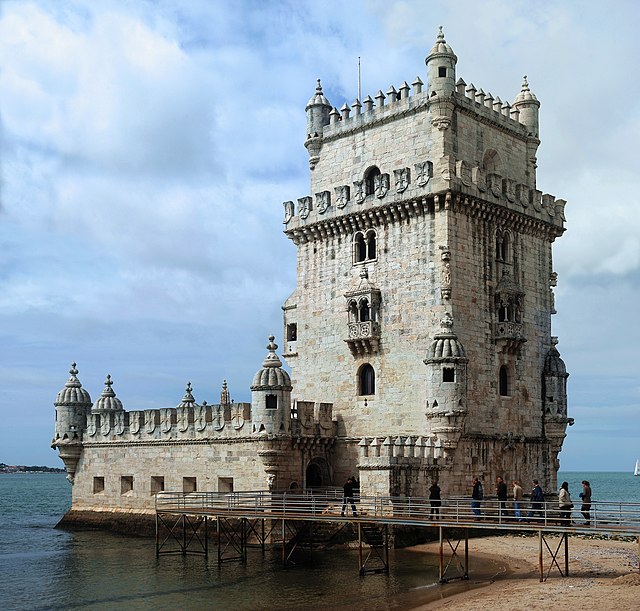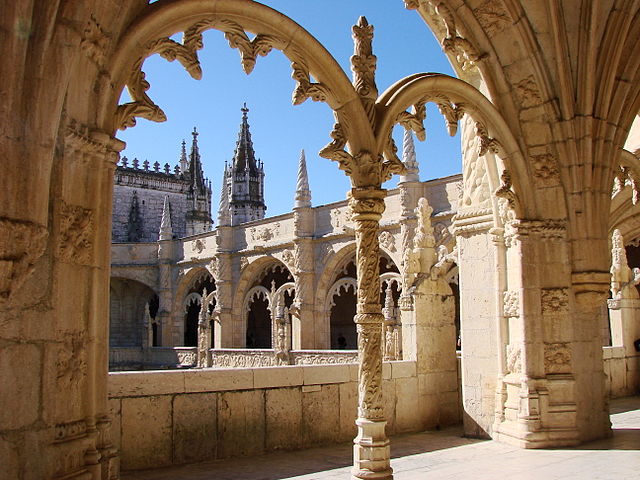Manueline – Portugal's Claim to Fame
By: Habeeb Salloum/Arab America Contributing Writer

Portugal is perhaps the only country in the world that can boast of its own unique architectural style, namely Manueline or Manuelino, developed during that country’s Age of Discovery. It came about as a result of the affluence, acquired from the trade with the East, when Portugal was the wealthiest nation in Europe.
The great sea expeditions and meetings with new cultures gave impetus to the growth, under the reign of Dom Manuel I (1495 – 1521), of a method of ornamental design, derived from his name. In the ensuing centuries, it became the decorative reflection in Portuguese art style – a distinctive contribution to world architecture.

One of the most obvious manifestations of the Portuguese character, it celebrates the exploration and imperial expansion of the country. Manueline truly symbolizes the thrill of that country’s Age of Discovery – an expression of Portugal at a time when its worldwide empire flourished. Like the fado (type of singing) with its heart-rendering yearning, it reflects the nation’s very soul.
The sea had the greatest hand in the creation of this Portuguese decorative style par excellence. With the country’s 800 km (497 mi) of coastline, a major part of the inhabitants depended, to a great extent, on fishing and the sea-trade for their livelihood. This, in turn, gave the people the opportunity to become great navigators and experts in shipbuilding.
The Portuguese caravel, important in the voyages of discovery, developed from the 13th century fishing boats. As was the case with the armillary sphere and the cross of Christ, frequently reproduced by Portuguese fishermen, the caravel became a typical pattern of the Manueline style.
The person who had the greatest impact on the development of this national Portuguese building technique was Henry the Navigator (1394 – 1460) who was instrumental in launching the voyages of ‘discovery’ which, in the subsequent years, resulted in generating an enormous amount of wealth. As the influence of Portugal spread from Brazil, across Africa and Asia to Japan, his leadership set the stage for Lisbon to become the trade capital of Europe.

By the time Manuel I took power, the government was mainly dedicated to the administration and management of the richness brought in from the discovered territories. This affluence and prosperity ushered in a flourishing artistic era in Portugal. As a symbol of their widely spread-out empire with its technical and intellectual progress, the Portuguese developed the Manueline form of ornamentation.
A hybrid of architectures, Manueline has an Islamic and Gothic heritage influenced by the building styles of Flanders, Italy, and Spain. Some historians assert that it is only an evolvement of late Gothic, influenced by Moorish elements, into a distinctively Portuguese building style. Noted for its delight in ornaments, Manueline often includes naturalistic and descriptive details. Above all, in its sea-inspired motifs related to the discoveries, it had a marked preference for the world of the oceans. It is a maritime art closely linked to the discoveries, as opposed to the Renaissance classicism – derived from the Greco-Roman style.
Due to the opening of virtually unknown lands, an inventive language and a new philosophy emerge in building design. Its originality lies in a very delicate decoration, graceful and lively that, at the same time, inspires itself in exotic and legendary patterns.
Manu line’s numerous forms, related to the sea and the voyages to other continents, mix elements of Christianity with coral shells, knots, twisted ropes and strange aquatic shapes. These are often crowned, as seen in the armillary spheres, with heraldic or religious imagery. Each narrative or decorative pattern is interwoven with the next, and the whole proclaims an image of flowing shapes that suggest the dramatic side of the adventures of the discoveries. It is an ornamental exaltation that separates itself from the Gothic and avoids the classicism of the Renaissance.
During its heyday, most Portuguese were enamoured with Manueline style. In the main, it was used as decorative architecture of portals, porches, and interiors – often to adorn old structures. If the gentry could not afford to build a church or palace, they would pay for decorating a window or door in this design, hence spreading the fashion throughout the country. However, most Manueline architecture is found south of the city of Coimbra since, in the era when this style flourished, the court rarely ventured much further north than this town.
There are examples of Manueline architecture throughout the country and, to a lesser extent in the former colonies. In religious structures, Lisbon’s Monastery of Jerónimos stands at the top of this art style. Its cloister and the main gate, surrounded by two large windows, are considered to be major Manueline masterpieces.
The Tower of Belém, located across from the Jerónimos and honouring Vasco da Gama, is an outstanding example of Manueline-military architecture. Conceived by Fransisco de Arruda who had worked in Morocco building fortified palaces, it incorporates flat domes, elegant loggias, Arab-style twin windows, intricate stone tracery and a tower of strikingly Moorish style.
From the thousands of other structures, the Manueline design is well portrayed in the mysterious and astrological visions of the famous window of the Convent of Christ in Tomar, once the bastion of the Templars. The town of Evora exudes the Manueline style, not only in its religious structures, but in many of its homes. In Sintra, both the historic Royal Palace and the Pena Castle embody a good amount of Manueline decorations which include Moorish traits. The embellishments in the Convent of Jesus in Setubal, on the coast south of Lisbon, are a classic version of the Manueline style and one of the earliest examples of this ornamental architecture.
Of course, these sites are only a tiny sample of the widespread use in Portugal of the Manueline ornamental design. A traveller roaming the country will find that almost every town in its monuments and venerable structures have some examples of this art – Portugal’s contribution to the architecture of the world.



